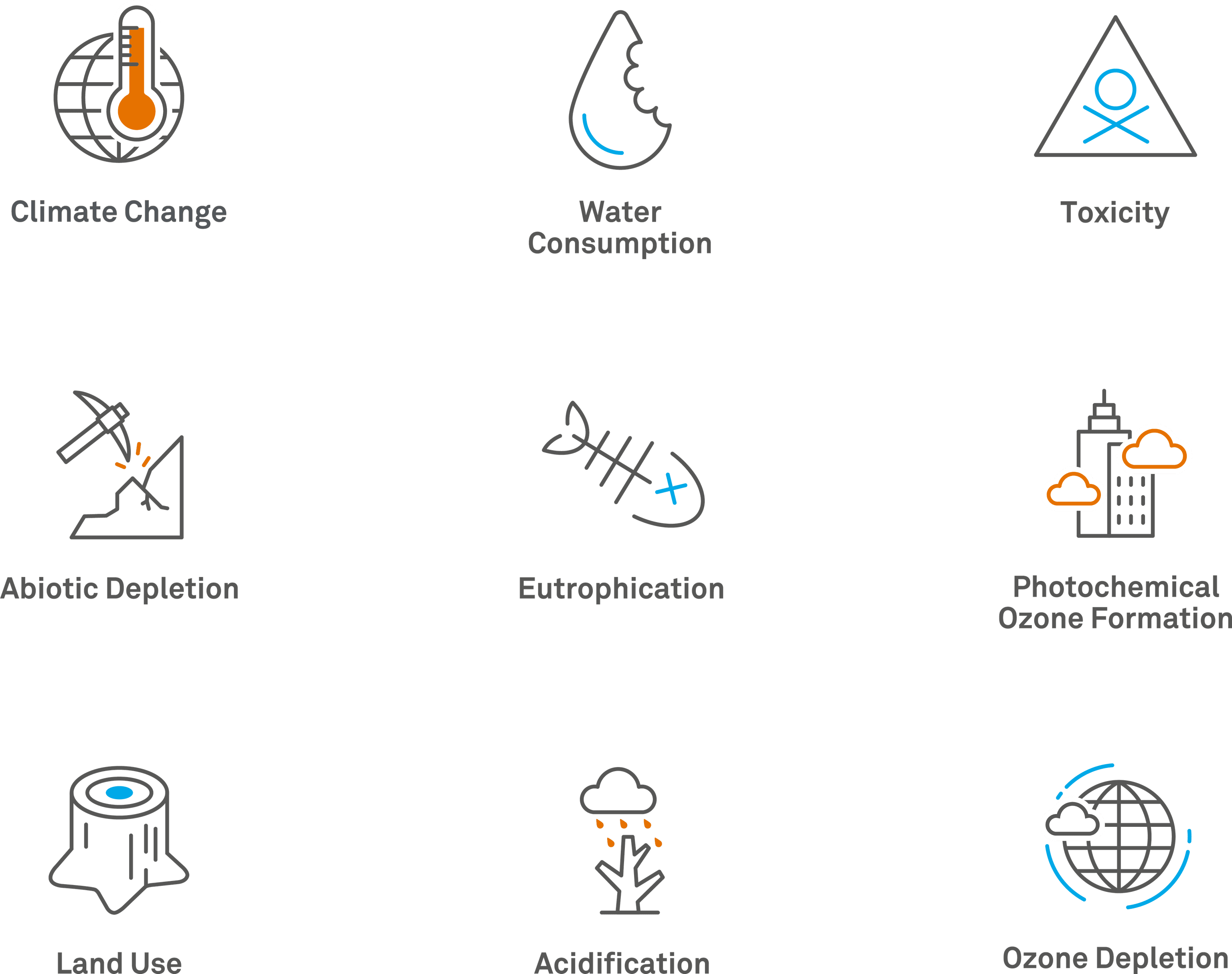
The road to 100% bio-based polyurethanes
At Stahl we strive to offer solutions using Responsible Chemistry. The Life Cycle Assessment methodology allows us the measure the environmental impact of a product to help us reduce our environmental footprint.
What is Life Cycle Assessment (LCA)?
LCA is a methodology that measures the impact of any product on the environment over the course of its life. The LCA methodology can provide quantitative data in a format that permits comparisons to be made.
We have identified products and processes where the impact on the environment can be calculated and reported. We believe that LCA will be an important value-added service for our customers in the supply chain in the future.
The 9 LCA impact categories explained
LCA defines nine impact categories:
Climate change: Climate change occurs when new lasting weather patterns emerge as a result of changes in the earth’s climate system. Global warming is a critical factor within this impact categories.
Abiotic depletion: Abiotic depletion is the use of non-renewable material resources like earth minerals, metal ores and fossil fuels, beyond their rate of replacement.
Land use: Land use is a pervasive driver of global environmental change. It includes all human activities and arrangements that harnesses terrestrial ecosystem services.
Water consumption: Water consumption is an important indicator for the environmental footprint of products and services.
Eutrophication: Eutrophication refers to the potential of water to become overly enriched with minerals and nutrients which can lead to the excessive growth of algae (algal bloom) and reduced or insufficient oxygen (hypoxia). This ultimately can lead to a decrease in biodiversity.
Acidification: An increase in the concentration of acidic elements can lead to a change in the natural chemical balance. This is called acidification. The major cause for acidification is the deposition of sulfur, nitrogen oxides and ammonia in the air. Acidification can lead to a decrease in biodiversity, damages to forests, corrosion and human health issues.
Toxicity: Toxicity refers to the ability of a substance to produce an unwanted effect when it has reached a sufficient concentration within the body. If a product has a higher toxicity, a smaller concentration is necessary to cause harmful effects.
Photochemical ozone formation: The formation of ozone at the ground level of the troposphere. This is caused by photochemical oxidation of Volatile Organic Compounds (VOCs) and sunlight. High concentrations can damage vegetation, human respiratory tracts and manmade materials through reaction with organic materials.
Ozone depletion: The release of chemical compounds containing gaseous chlorin or bromine gradually thins the earth’s ozone layer in the upper atmosphere.

Interview: LCA within the leather industry as a major milestone
The approval of the Leather Product Category Rules (known as PCR or PEFCR) by the Environmental Footprint Committee of the EU is a major milestone for the leather industry. It defines how LCA can be used to calculate the impact of leather manufacturing on the environment. It includes all aspects of leather manufacturing in tanneries; input data on hides, chemicals, water, energy, plus output data of water, air and waste.
Read the interview with our Director of Sustainability Michael Costello about the LCA methodology in the magazine International Leather Maker.